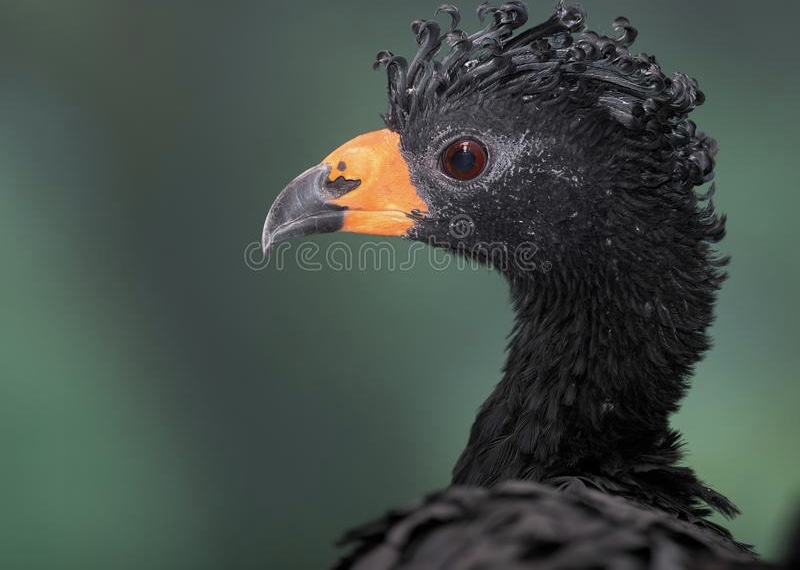ANIMAL: Wattled Curassow Crax globulosa Type of Animal: Gamebird Habitat: Humid forest, tropical lowland forest, seasonally flooded forest, riverine forest, gallery forest, areas around lakes, river islands, lowland forest water edges, foothills Location(s): Far SE Colombia, W Brazil, E Peru, far E Ecuador, N Bolivia Appearance: Males have black plumage except for white cloacal area, dark brown irises, blackish legs/bill/feet, crimson bill ornaments/knob. Females have black plumage w/ reddish-buff cloacal area, sometimes faint brownish marbling around posterior wing feathers/wing coverts, blackish bill/iris, lack wattling/knobbing & have orange-red cere (bill base), feet/legs grayish flesh color, younger males have yellowish bill ornaments. Turkey-like appearance. Females have shorter curly crest than males. Food/Diet: Fruit, greens, leaves, seeds, flowers, insects, crustaceans, fish Status in Wild: Endangered Conservation: Breeding in zoos & wildlife centers Lifestyle: Small groups of a male w/ 1-2 females & chicks Additional Info: Called: Male: Cock Female: Hen Young: Chick Group: Covey Weight: Male: 7 lbs Female: 5.5 lbs Young: 2.8 lbs Gestation: 1 month Life Span: 20 years Height: Male: 2.9 ft Female: 2.7 ft Body Length: Male: 2.9 ft Female: 2.7 ft Tail Length: 1.3 ft, same for both sexes Main predators of adults are crocodilians, felids, bears, anacondas, boa constrictors, & eagles. Chicks preyed on by monkeys, opossums, hawks, & rainbow boas. Endangered due to habitat loss, deforestation, hunting for meat/eggs, deforestation, agriculture, & mining. Males hunted more often than females due to loud booming calls. Males highly territorial, w/ fights sometimes resulting in death. Females lay 1-3 eggs per clutch, once a year. Chick (s) stay w/ parents for a year. Sexually mature at 2 years old. Males make low-pitched booming sound & emit high descending whistles. Knob/wattle on male used in mating displays. Newly hatched chicks covered in brown down above & whitish down below. Males court females by strutting around them & giving out low booming calls. Crude flat twig/leaf cup nests small compared to birds. Highly sedentary, living only a few miles away from birthplace at most. While more arboreal than many other curassow species, they do rely on speed to escape predators. Forage on the ground. Fun Fact(s): Highly precocial, being able to move about soon after hatching. Swallow stones to aid digestion of tough seeds. They can panic easily & are rather skittish in the wild. Very curious birds. Many individuals rather friendly towards people though hand-raised imprinted males can be aggressive towards people as well as females.

